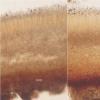
09-12-2025 12:06
 Andgelo Mombert
Andgelo Mombert
Bonjour,Je recherche l'article concernant Hypobryo

12-12-2025 18:39
Mirek GrycHello everyone.Macrofeatures similar to Mollisia b

07-12-2025 16:07
Arnold BüschlenHallo, ich habe in einer Moos-Aufsammlung (epiphy

08-12-2025 21:04
Mark Stevens"Hello everyone,I'm relatively new to microscopy (

08-12-2025 18:59
 Lothar Krieglsteiner
Lothar Krieglsteiner
.. found by a seminar-participant, I do not know t

08-12-2025 17:37
 Lothar Krieglsteiner
Lothar Krieglsteiner
20.6.25, on branch of Abies infected and thickened
Literature on Diplocarpa
Enrique Rubio,
15-01-2023 21:11
Diplocarpa constans sp. nov., a new species of Cordieritidaceae from Yunnan, China. Phytotaxa Vol. 561 No. 1: 6 September 2022.
Many thanks in advance.
enrirubio@asturnatura.com
Hans-Otto Baral,
15-01-2023 21:45

Re : Literature on Diplocarpa
I send it to you.
Enrique Rubio,
16-01-2023 11:12
Re : Literature on Diplocarpa
Thank you, Zotto.
In the fresh state I see hardly any difference between a preparation in water and in KOH 20% (see the attach). Should the ionomydotic reaction be evaluated only on herbarium material?
I would also like to ask whether Diplocarpa curreyana has priority over bloxamii and whether Ionomidotis irregularis should be placed in the genus Diolocarpon.
In the fresh state I see hardly any difference between a preparation in water and in KOH 20% (see the attach). Should the ionomydotic reaction be evaluated only on herbarium material?
I would also like to ask whether Diplocarpa curreyana has priority over bloxamii and whether Ionomidotis irregularis should be placed in the genus Diolocarpon.
Hans-Otto Baral,
16-01-2023 11:40

Re : Literature on Diplocarpa
Beware of confusion between Diplocarpa and Diplocarpon! The combination D. irregularis was done in Index Funforum in 2022.
The history about Diplocarpa is complex, I will send you the text of our manuscript.
The ionomidotic reaction is only seen for a period of some seconds or maybe still after 20-30 sec. As soon as you squash the mount it will dillute. No difference between fresh and dry.
Enrique Rubio,
16-01-2023 12:32
Re : Literature on Diplocarpa
I have not been able to observe this reaction in fresh material and it is not the first time this has happened to me. I think this reaction is, in general, too irregular.
